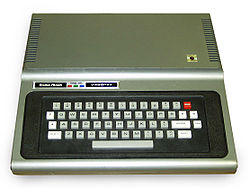Your Legal Resource
Tandy Color Computer Unraveled Series
Tandy Color Computer Unraveled Series
Links to CoCo related sites:
- CoCo Reference books in pdf and zip format
- TRS-80 Color Computer Archive
- A complete history and reference guide to the CoCo and all related hardware, software, and support sources.
- Tandy Colored Computer Unravelled Series II
History:
Tandy Corporation declared the TRS-80 Color Computer in July 1980 to rival the modest and famous Commodore VIC-20. The Color Computer is an unexpected plan in comparison to the Zilog Z80-based TRS-80 models. BYTE stated, "The solitary closeness between [the two computers] is the name".
The TRS-80 Color Computer gets from a "test videotext project by the Kentucky Cooperative Extension Service and the University of Kentucky College of Agriculture" in 1977. Motorola Semiconductor of Austin, Texas, won the agreement for the client terminals and Tandy's Computer Division joined later to fabricate the terminals. The underlying objective of this venture, called "Green Thumb", was to make a minimal expense Videotex terminal for ranchers, farmers, and others in the agrarian industry. This terminal would associate with a telephone line and a common shading TV and permit the client admittance to approach continuous data valuable to their everyday procedure on the homestead.
Motorola's MC6847 Video Display Generator (VDG) chip was delivered about the time the joint endeavor began. The 1978 model "Green Thumb" terminal utilized the MC6847 and the Motorola 6809 chip. Tragically, the model contained an excessive number of chips to be monetarily suitable. Motorola reacted by incorporating the elements of numerous more modest chips into one chip: the MC6883 Synchronous Address Multiplexer (SAM). The SAM, VDG, and 6809 were utilized as the center of the vision terminal. It was additionally sold through Radio Shack stores as the VideoTex terminal around 1980.
The VideoTex terminal gave the establishment a broadly useful home PC. The inward modem was taken out, and I/O ports for tape stockpiling, sequential I/O, and joysticks were given. A development connector was added to the correct side of the case for future improvements and ROM cartridges ("Program Paks"). A sticker showing the measure of introduced memory in the machine covers the opening where the Modem's LED "Information" marker had been. On July 31, 1980, Tandy reported the TRS-80 Color Computer, which has a similar case, console, and design as the AgVision/VideoTex terminals.
Tandy saw organizations as its essential market for PCs. Albeit the organization's Ed Juge said in 1981 that the Color Computer was "our entrance into the home-PC market", he depicted it as "for genuine experts", expressing that a word processor and accounting page would before long be available.[7] The underlying model (list number 26-3001) was delivered with 4 KB of Dynamic Random Access Memory (DRAM) and 8 kB Microsoft BASIC in ROM. Its cost was US$399 (comparable to $1,136 in 2020). Within a couple of months, Radio Shack stores across the US and Canada started selling the new PC.
